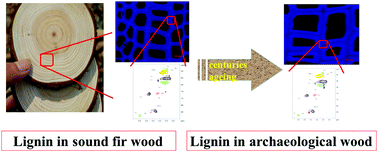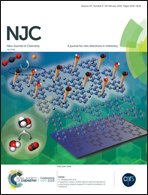Revealing the effects of centuries of ageing on the chemical structural features of lignin in archaeological fir woods
Abstract
The cellular components of historical or archaeological wooden objects can be degraded by fungi or bacteria during ageing. However, understanding the chemical changes of the molecular and structural features of lignin during ageing and degradation remains inadequate. To improve the state of knowledge in this field of study, lignins from archaeological fir wood aged in tombs, which range in years from ∼200 BC–1600 AD, have been thoroughly analyzed. Results from the visual fluorescence images showed that the lignin in certain regions of the xylem cell wall underwent more degradation compared to the control sample (healthy fir wood). Chemical analysis and structural analysis, using nuclear magnetic resonance, of isolated lignins from each wood sample indicated lignin depolymerization via loss of native substructures, most notably a decrease in β-O-4 linkages over time. Relative to the control sample, it is found that ageing mostly induces depolymerization, but certain results hint that lignin repolymerization might take place at extended ageing times. Overall, the results obtained can help guide efforts towards taking better care of archaeological woods uncovered across the world.



 Please wait while we load your content...
Please wait while we load your content...